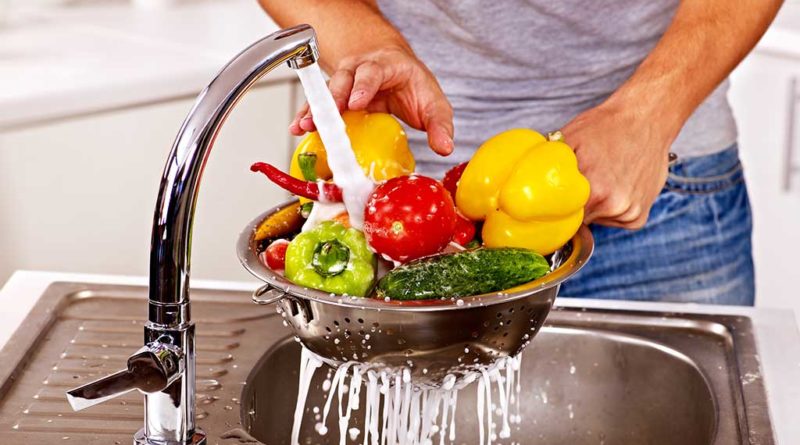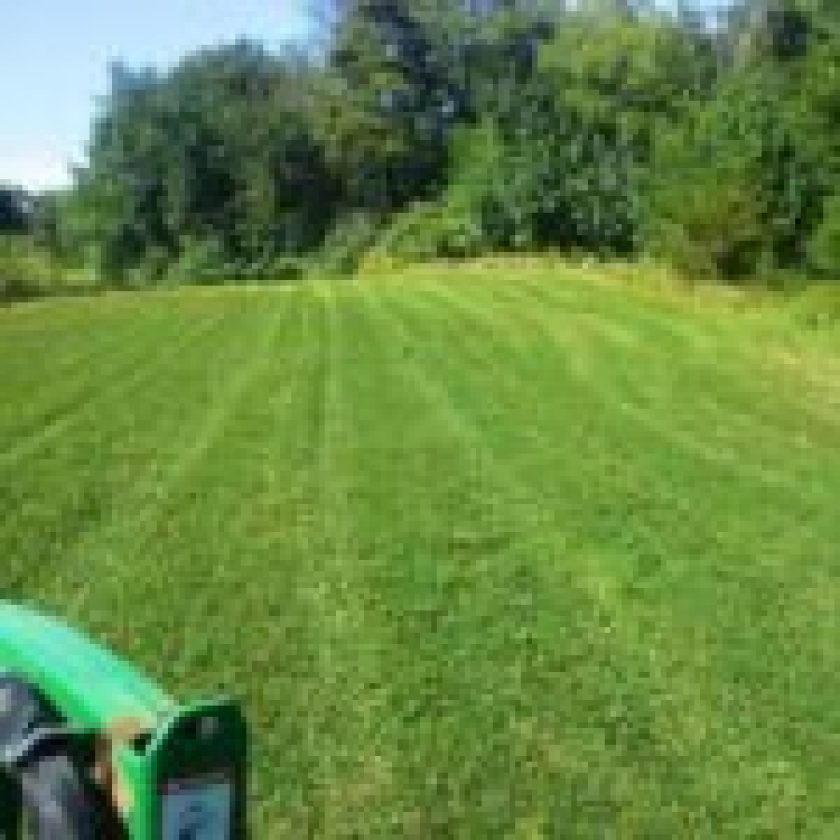The importance of sanitizing each and everything around us has been an eye-opener during this COVID-19 outbreak. Cleaning essential items like food are also very much necessary, which we generally forget. Fresh produce like vegetables and fruits come from different sources and can have the risk of carrying the virus. So it is very important to wash them rather than giving a simple wash in tap water. You may not be aware of the basic process of sanitization of fruits and vegetables and food cleaning, so in this article, we talk about the whole process at Live Enhanced.
The Need of Sanitization
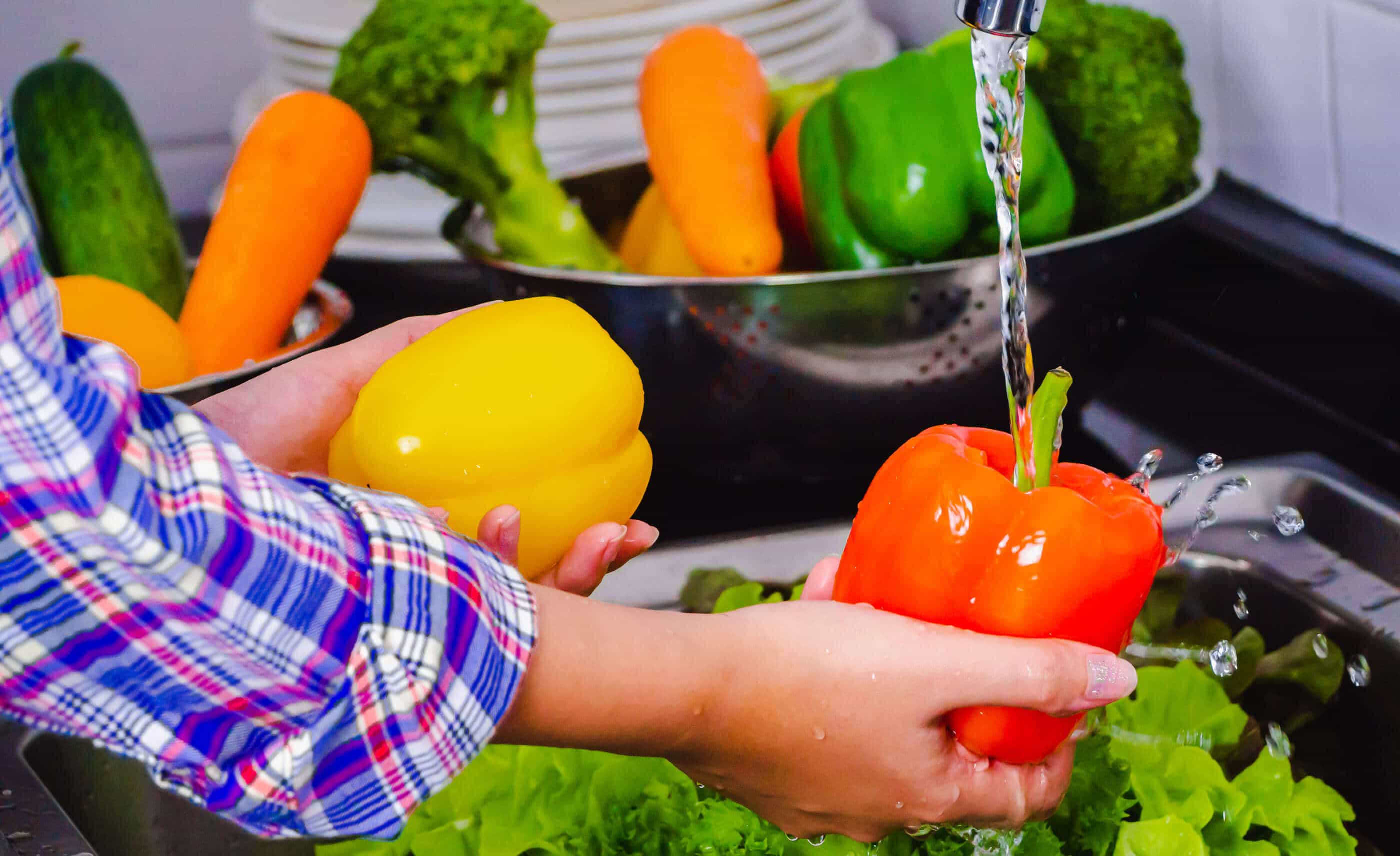
You may ask why it is necessary to sanitize fruits and vegetables. You might know that these items come from a long way and from different sources to your shelves. They can contain many harmful agents which will be harmful to you. It is also important to be extra careful about what you eat in this pandemic, though FDA have not found any evidence of Corona Virus Transmission in either raw foods or packaged foods. However, you need to clean bacterial residue from them to avoid consuming harmful bacteria, pathogens, and chemicals.
How to Safely Sanitize Fruits and Vegetables
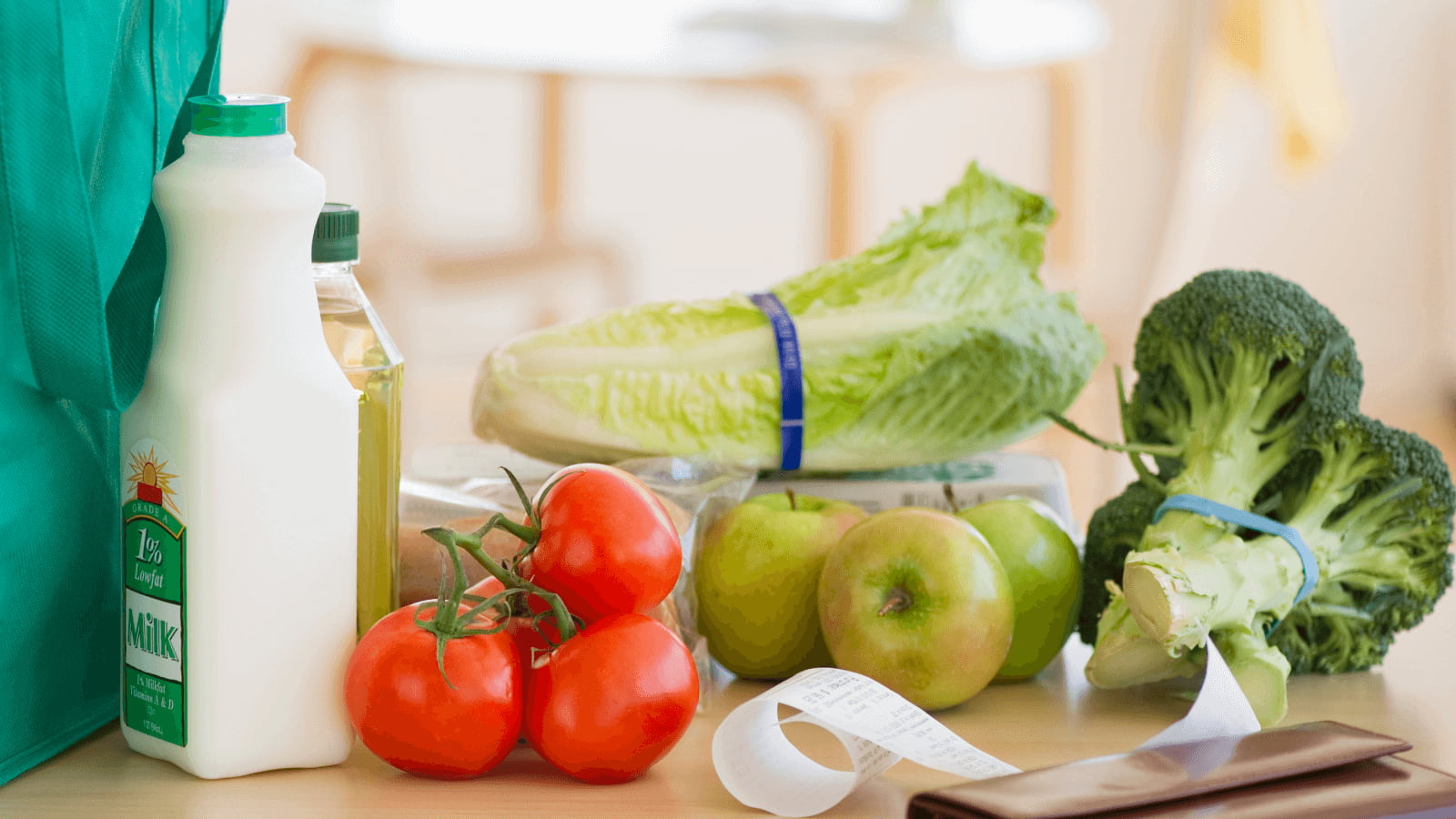
- Firstly, wash your hands. You must wash your hands with hand sanitizers or soap for a full 20 seconds before you grab any fruits or vegetables, or the virus will transfer into them even after sanitization.
- Wash the fruits and vegetables with cold water only. You may have searched online about how to sanitize fruits and may have found a lot of answers, including the idea of sanitizing the produce in soapy water, but this is a simple yet effective solution. Whether you are about to peel and consume or directly cook produce, just rinse each and every fruit and vegetable in cold water for 30 seconds. You should not use hot water as it provides an entry path for microorganisms.
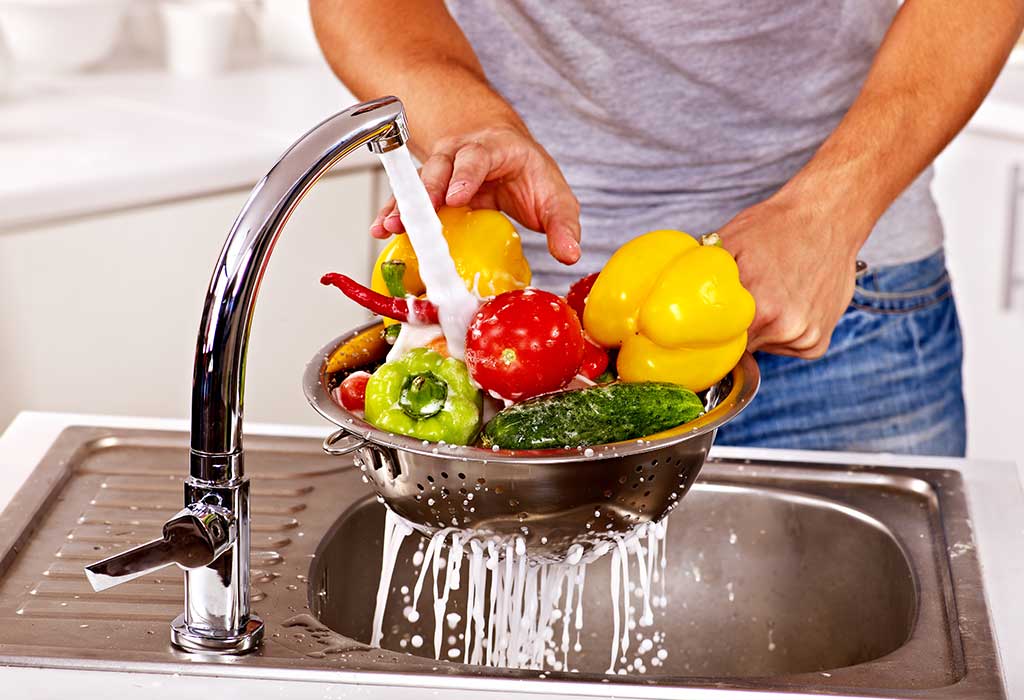
- If you are not convinced by the tip above, you may try other ways. You can give a bath of baking soda to your fruits and vegetables before consuming them. Firstly clean your kitchen sink and then fill it up with cold water. Then take about a teaspoon measure of baking soda and then put your fruits and vegetables in this solution for 12 to 15 minutes. Do not use a heavy amount of baking soda or it will affect the taste of the produce. You can also do this food cleaning trick by sanitizing each of the products inside a bowl of water and baking soda.
- Another useful tip for sanitization of fruits and vegetables is; do not wash them just before consuming them. By doing so, you may get rid of the COVID-19 virus but the outer surface of the product remains moist and other types of bacteria may stay there. To be safe, wash the fruits and vegetables and dry them before peeling and consuming them.
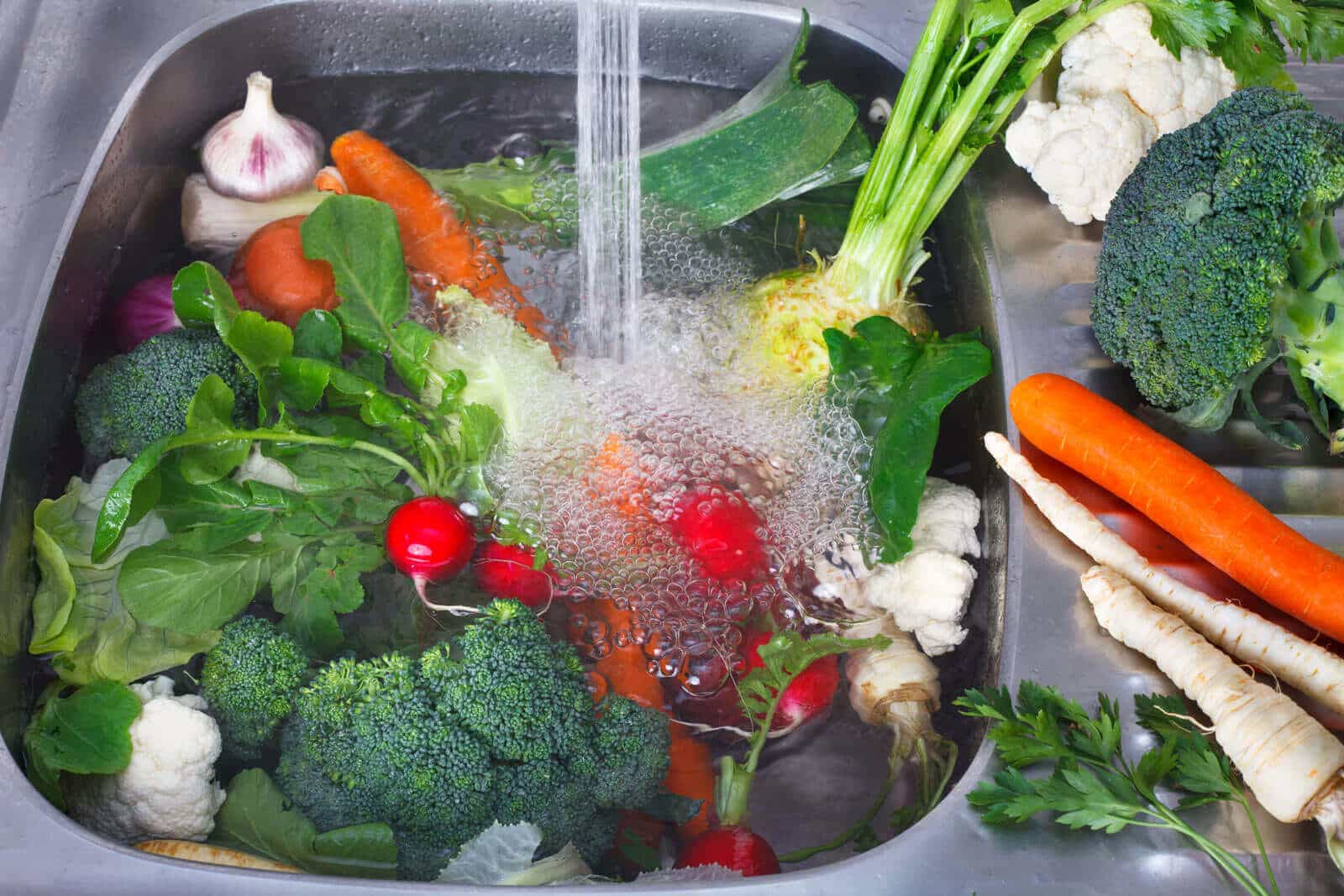
- Apart from the basic questions like how to sanitize fruits and how to sanitize vegetables, many are asking if a particular fruit/vegetable needs special attention than others. A list published by the Environmental Working Group shows that there are Dirty Dozen (those which have the highest risk of pesticides and other harmful elements) and Clean fifteen (about which you do not have to worry much). Before sanitization, just refer to this chart. The dirty dozen includes these items: strawberries, spinach, kale, nectarines, apples, grapes, peaches, cherries, pears, tomatoes, potatoes, celery, and hot peppers. The Clean fifteen includes: avocados, sweet corn, pineapple, onions, papaya, frozen sweet peas, eggplants, asparagus, cauliflower, cantaloupes, broccoli, mushrooms, cabbage, melon, kiwi and honeydew.
Conclusion:
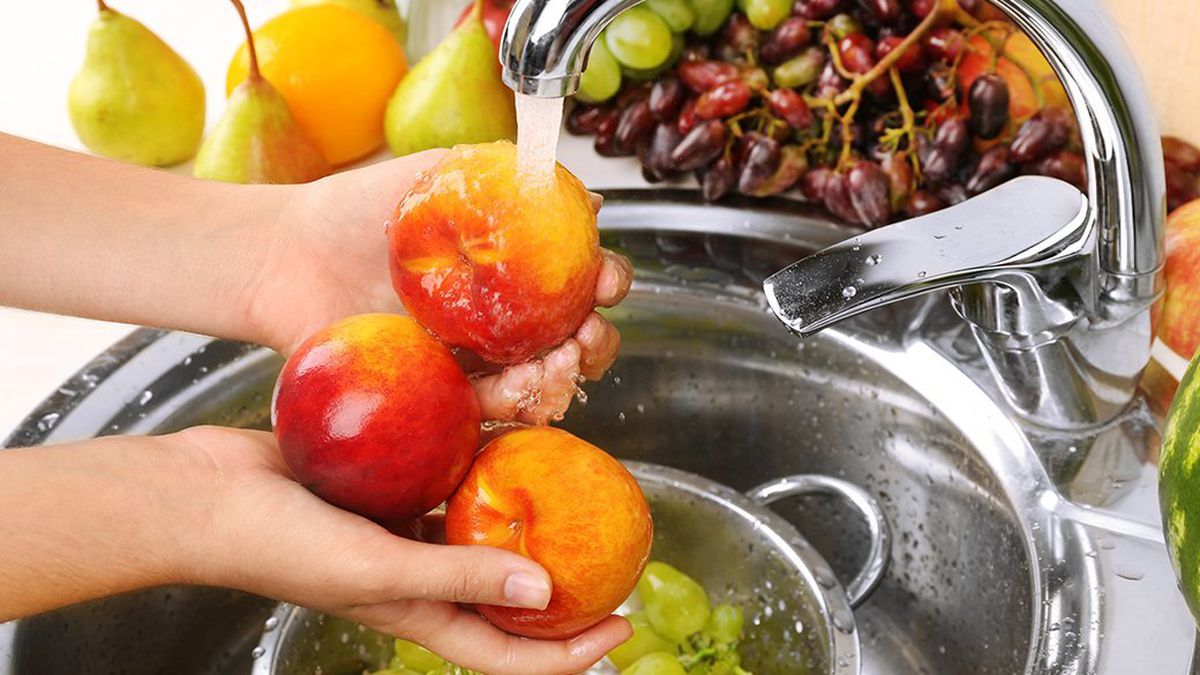
Before cleaning bacterial residue from your produces next time, you should remember this list and wash accordingly. This is a time of keeping your cool and act accordingly, so do not panic, just follow some simple safety measures and sanitize your fruits and vegetables. Wash them with sanitized hands and cold water for a minimum of 30 seconds, and you can consume them without any fear of contamination.

